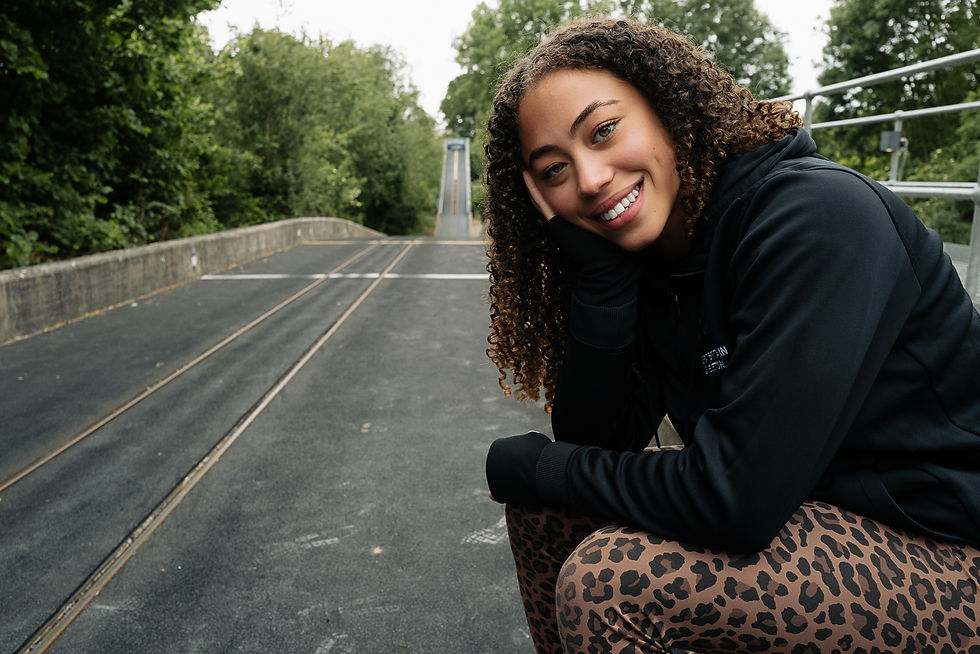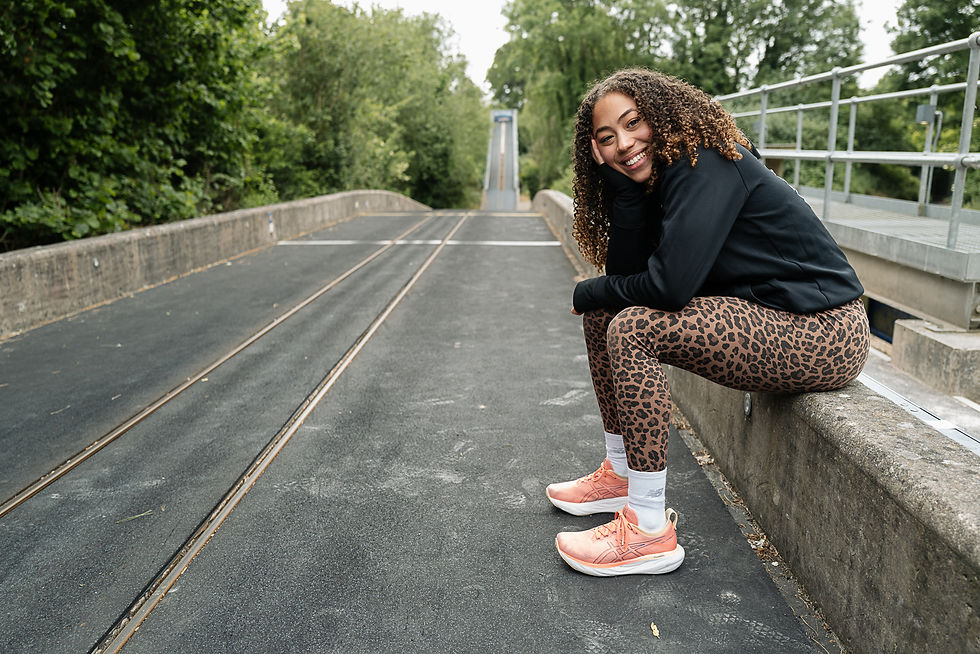
Training for a skeleton athlete is split into two halves, summer and winter. In summer we are working in the gym, lifting, trying to get our legs ready to be super powerful and explosive for our push start (the first part of a skeleton run) come winter. We train in beautiful Bath, which is where everyone who does skeleton for GB is based. So we all train together with our strength and conditioning coaches and have all of our support staff on site too. So it feels like one big family. Over the winter, we travel across the world to different tracks and race.
Being a skeleton athlete, quite often you encounter people who believe you just jump on this tea tray, lay there quietly while you slide down the ice and then hop off and go again. In actual fact, it’s one of the most fast paced and technical sports out there. The juxtaposition of what people see and what you’re actually doing on the sled is beautiful, in my opinion.
You have to be so in tune with yourself. Each track across the globe is different; it’s a new combination of twists and turns and a different amount of gradient. You have to learn each track like the back of your hand, and be ready to react to any situation. Added to that, the ice conditions constantly change, which affects the speed and you’re fighting to win, sometimes, by a hundredth of a second, so precision is everything. That’s one of the reasons I love it so much, because of that challenge, and when you conquer it and hit a flow state, you feel like you’re flying. Afterwards your heart is beating out of your chest, the endorphins are rushing through your system and I usually can’t help but smile - I feel so alive.
There’s a couple of ways to get involved in skeleton, the skills you need to be a good skeleton athlete are very transferable from other sports, so the main route is the talent ID process which gets done roughly every two years. I personally saw an advert on Instagram for the ‘Discover your Gold’ Talent ID and I signed up, not knowing that Skeleton was scouting.
I applied on a whim and went to the first open trial which had very basic testing like how fast you can run, how far you can jump and body biometric data. Then the team at British Skeleton picked people based on that data.
I guess I was in shock at the beginning, being chosen to try and become a Team GB athlete. The kind of sports that I’d done before were very artistic and expressive. I’d never set foot in a gym, I didn’t own a pair of spikes, I didn’t know how to run. The school I went to was in inner city London so I rarely had exposure to athletics or any of those things. So despite being told I was quite athletic and physically competent growing up, I’d never really been given the opportunity or the space to see what I could do. And truthfully, I didn’t harbour a huge desire to try and find out myself - I was happy and didn’t know what else was out there.
Upon being told I had made it into the Skeleton team, my immediate emotion was disbelief. I couldn’t fathom that these very qualified coaches believed in me and saw my potential. It wasa first for me, and I had assumed you had to be fairly good at sprinting and lifting already. It is a rarity in any field, especially in elite sport where everything is cut-throat, to be given opportunity purely based on what you could be in the future, over what you currently are. I feel very privileged to have been in a position where people saw me and thought ‘We cansee greatness ahead’. They essentially said ‘Trust us. Trust in this process, and we’ll get you there’, so I did.

I’m thankful to myself for believing. I gave myself that chance to keep going, to keep trying and to not let my lack of experience, skill or even confidence hold me back. I felt so out of my depth for a long time, and there were points I wanted to give up - it would have been easier. I longed for the day when this ‘potential’ I had would kick in. I put in the grind and had patience and one day, luckily, it did.
For a while I was nervous about becoming a full time athlete. The idea of committing myself fully to Skeleton was scary, because in doing so I was opening myself up for the possibility of failure. I had huge impostor syndrome and struggled with the concept that I had to succeed or it would all be a waste. But that mindset is so limiting, and does nothing but hold you back. Once I allowed myself to be vulnerable and jump in with both feet, I truly started to see my hard work paying off. I was embodying an elite athlete and my confidence grew and grew - as did my skill.
I feel very lucky to have found Skeleton when I did. I found a sport that I clicked with at 17. I’m aware that for many people it’s not that straightforward, but it is worth searching and trying and failing and putting yourself out there time and time again, because whether you become a gold medal winner or not, sport is one of the most brilliant things you can do.

I reached a point going through puberty where I became very insecure in myself, I was struggling with my menstrual cycles and it was affecting sports. I felt like I should be better than I was, I should be doing things I wasn’t doing. I should be more athletic. But as a woman during that time, everything was changing constantly and it was overwhelming. I am glad I had such supportive females around me who kept me persevering and held my hand through the challenges I faced with my body and hormones. My message to young girls coming through would be just keep persevering. Don’t let yourself or your fears stop you from trying something new, from being active. Listen and work with your body, trust in it and love it fiercely.
One thing I hope for the future of women’s sport is that they do more female specific research. A lot of the studies are all done on men, and that’s really disappointing. I don’t know the numbers off by heart, but they’re very low. So I really hope that the sporting girls of the future who might be facing particular struggles with anything inherently female, can easily access specific data about women in sport that they can relate to. They can go, ‘Hey, Coach, this is what’s going on with me right now, and there’s a load of other women who face the same
thing, it says this will help - Can we try it?’.
My even bigger hope is that the future coaches have already identified what they’re going through and have specific, researched and proven solutions. That’s what I really, really hope.
Before I slide and compete, I always find time to go and stand in front of a mirror alone. And I just look at myself in the eyes and I say that I’m strong, I’m powerful and I’m capable, that I love who I am and that I’m proud of myself. And I then smile, I try to smile to the point where I almost make myself laugh. And I do that every single time. I try to bring some happiness and light and kindness and compassion to myself. I don’t rely on other people for that, not before a Skeleton run.







Comments